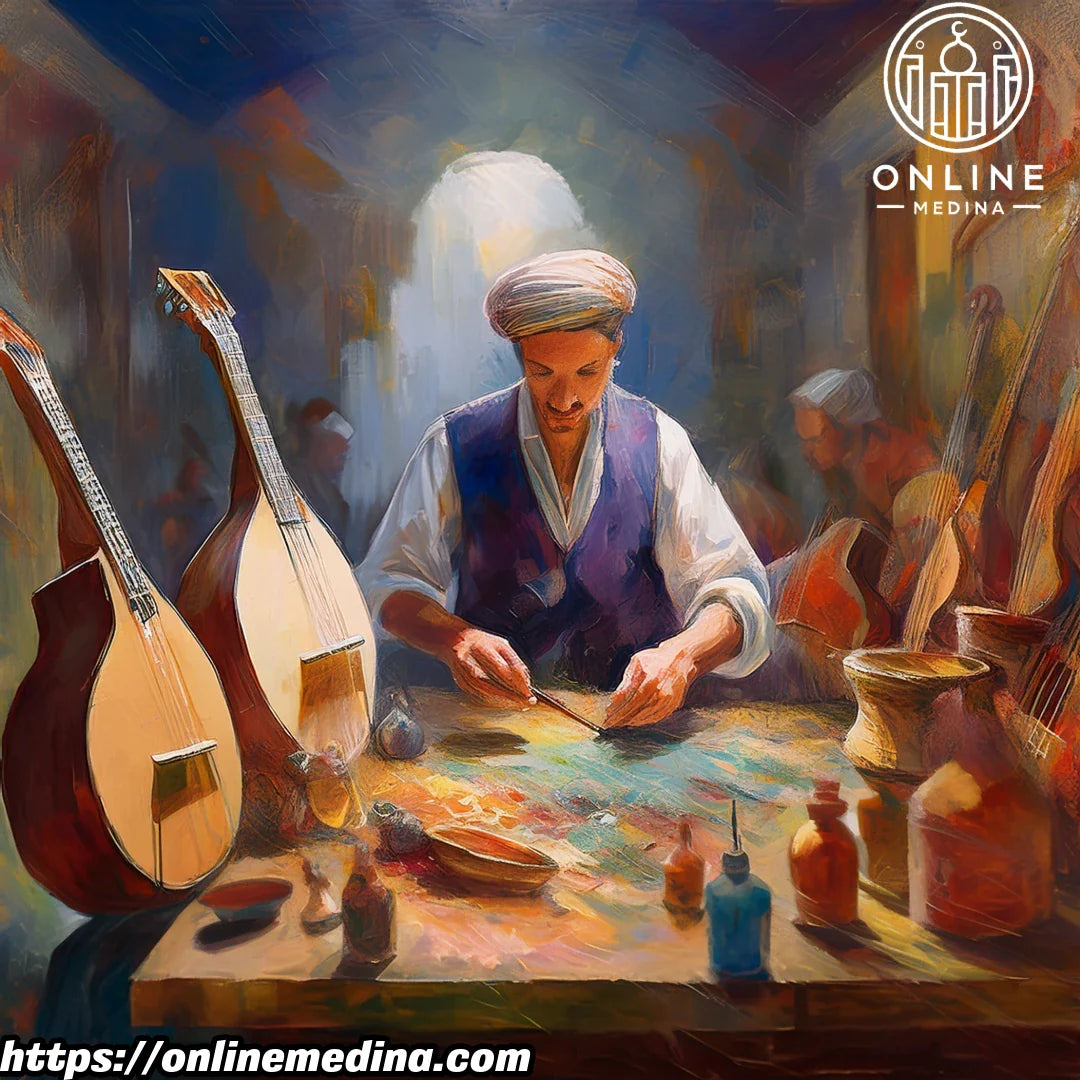
🎬 EPISODE 12: Musical Instruments
In the bustling souks of Fez and Marrakech, at the turn of an alley, the captivating sound of a guembri resonates, accompanied by the deep rhythm of a bendir. Behind these emblematic musical instruments, artisans perpetuate a know-how passed down from generation to generation.
📜 Music and crafts: an ancestral fusion
The history of Moroccan musical instruments is closely linked to the country's cultural and spiritual traditions.
🎵 Historical landmarks:
- Pre-Islamic period: the Berbers already used percussion instruments such as the bendir in their rituals.
- 8th century: Andalusian influence brings stringed instruments like the oud, enriching the musical heritage.
- 15th century: with the rise of the Saadian dynasty, Gnawa music and its emblematic guembri became deeply rooted in Moroccan culture.
- Modern era: craftsmen continue tradition, while incorporating innovations to improve acoustics and durability.
📌 A link with episode 8: some luthiers engrave calligraphic motifs on their creations, mixing music and artisanal aesthetics.

📜 Morocco's emblematic instruments
- The bendir: drum on a wooden frame, used in Sufi and Berber ceremonies.
- The guembri: a plucked string instrument made of thuja wood and covered with goatskin, central to Gnawa music.
- The oud: oriental lute made of walnut or mahogany, with a soft, deep sound, popularized by Andalusian musicians.
- The tarija: small percussion instrument made of terracotta or metal, used to accompany popular music.
- The ghaita: traditional oboe, often heard at festivals and spiritual processions.
📌 Thuja wood, used for carved boxes, is also a preferred material for guembris and ouds.

📜 The secrets of instrument making
Each Moroccan instrument is the result of a long artisanal process, combining the choice of materials and precise techniques.
🔨 The manufacturing stages:
- Wood selection: walnut, thuja or cedar for resonance and durability.
- Sculpting and assembling: each piece is hand-carved to achieve the perfect shape.
- Applying skin or strings: artisans use goatskin for percussion and gut or nylon strings for stringed instruments.
- Ornamentation and finishing: engravings, mother-of-pearl inlays and Berber or Arabic motifs give each instrument its unique identity.
📌 Copper artisans also create decorative elements for some instruments such as the ghaita.

📜 Instruments in Moroccan tradition
Music plays an essential role in daily and spiritual life in Morocco.
- In Sufi rituals: the bendir accompanies spiritual chants to induce a trance state.
- In Gnawa culture: the guembri is the central instrument of trance and healing ceremonies.
- In popular celebrations: the tarija and ghaita are essential during weddings and festivals.
📌 During musical ceremonies, musicians often wear traditional hand-embroidered garments.

📜 Musical craftsmanship between tradition and modernity
Faced with industrial instruments, Moroccan artisans adapt to preserve their know-how:
- Collaborations with international musicians to modernize the acoustics of traditional instruments.
- Exporting handmade instruments to Europe and the United States through dedicated platforms.
- Learning through oral transmission between master craftsmen and young apprentices ensures continuity of the craft.
💡 Why choose a handmade Moroccan instrument?
- An authentic and unique sound
- Ethical and local production
- Millennia-old know-how rooted in Moroccan culture

🎯 A harmony between craftsmanship and music
Moroccan musical instruments are not mere objects: they are the living soul of the country's musical traditions. Behind each note lies the imprint of a passionate artisan, preserving a unique intangible heritage.
📌 In the next episode: discover the little-known world of horn carving in Morocco 🦴. A fascinating journey to meet the last master craftsmen of this endangered trade.
🥁 Love traditional rhythms? Visit Online Medina and explore Moroccan musical craftsmanship.
